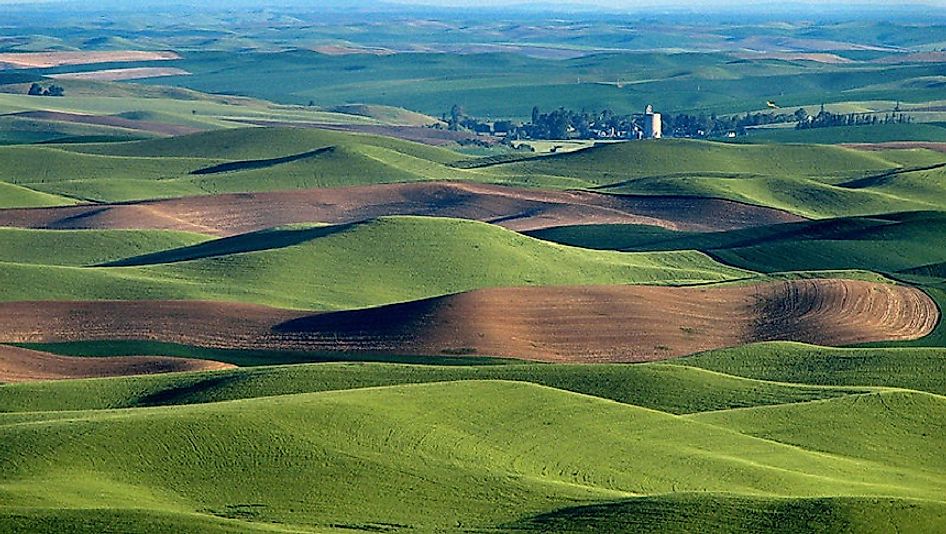Loess Soil And Ground Fertility

5. Physical Characteristics
Loess makes up 10% of the surface soils in the world. The word Loess has a German origin, and means 'loose', which also reflects one of its main properties. Loess can be made up of silt and loamy particles up to 50% and of clay particles up to 10%. As the distance from the source increases, the grains size deposited decreases. Sources can be local or distant, resulting in local variations in loess. Lime or carbonate, is another characteristic component of loess. The type and amount of carbonate depends on the process of formation of loess before and after deposition of silt, and the rainfall in the region. Since it is loose, these soils are not very strong. Loess are firm when they are dry but can crumble and collapse when soaked with water. The soil can hold 10% to 15% concentration of water, and has a porosity ranging from 34% to 60% depending on whether the loess is richer in clay or sand.
4. Locations of Large Loess Deposits
Loess formations are found in temperate and semiarid regions of the world. The largest loess plains are found in Huangtu Plateau, or Loess Plateau, in China’s Northwest. Loess is also found in Kazakhstan, Uzbekistan, and east of the Caspian Sea in Asia. In Europe, it is found along Lena River and Lake Baikal in Siberia, the South Russian plains, in the Danube Basin, along the Rhine, in the German-Polish plains, and the Paris Basin. In North America, loess forms the plains of the Platte, Missouri, Mississippi, and Ohio Rivers, and in the Columbia Plateau. In South America it forms the Pampas in Uruguay and Argentina. Some loess plains are also found in New Zealand.
3. Formation
Loess is formed when fine dust is transported by wind and deposited elsewhere. Depositions vary in thickness from a few millimeters to several meters in depths. Sand in deserts are still being moved by wind as seen in the Gobi Desert in Asia. Silt can be moved twice, by wind and water, causing a finer segregation of particles based on size and weight. Some loess deposits have been created by past glacier activity, 3 to 65 million years ago. Glacier movements weather rock into fine particles which are deposited when the glaciers melt. The vertical overhanging walls of loess soils formed due to repeated deposition of dust in some areas are a typical feature of this sedimentary soil. Quartz, feldspar, and mica are some common minerals that form loess.
2. Role In Agriculture
Loose and mineral loess are very suitable for intensive agriculture. The looseness makes loess easy for cultivation operations, and ensures proper soil aeration and root growth. Loess is able to retain enough soil moisture and provide adequate amounts of potassium and nitrogen for good crop growth. It is possible to get moderate yields without using any additional chemical fertilizers
1. Erosion Concerns
Loess is prone to erosion by wind and water, especially when the protective vegetation is removed due to over-grazing or deforestation. Water results in raindrop, surface, rill and gully erosion. Since loess is loose and soft, rainfall dissolves particles of the exposed degraded soil and carries it away. In case of heavy rainfall rill and gully formations result. Since loess is not firm, it an be damaged by collapsing, giving rise to gravitational erosion through landslides. Artificial erosion due human activities like quarrying, mining and agriculture is also on the rise. The best way to repair damage is by afforestation, or re-greening with grass in low rainfall areas. Engineering by mud and concrete dams are another means.











